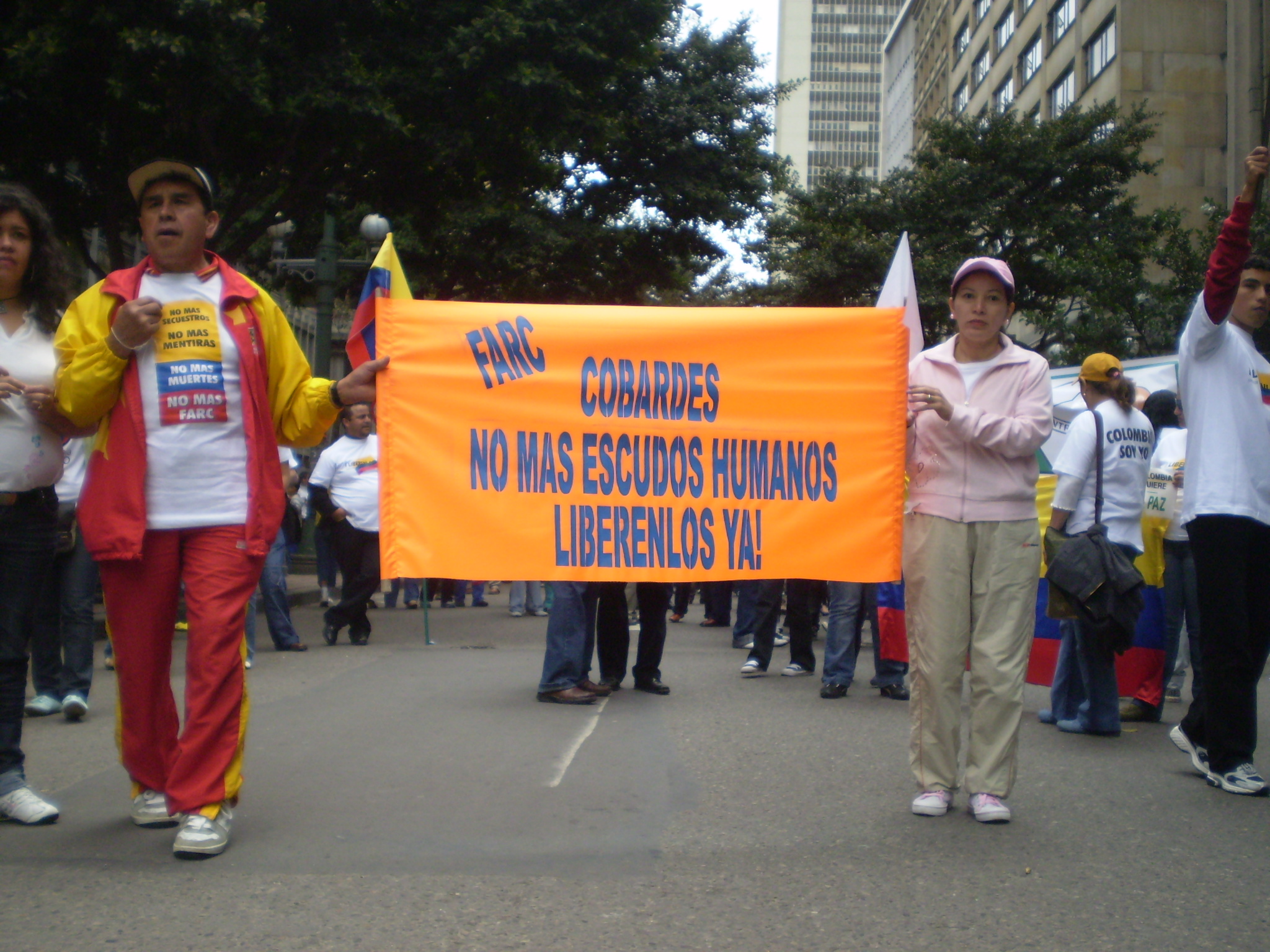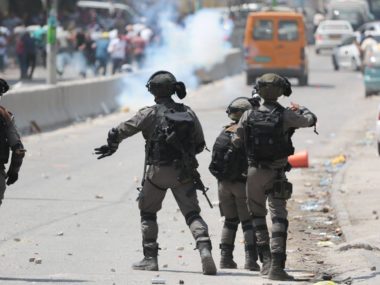By Timothy D. Sisk for Denver Dialogues

This year at the United Nations a new development agenda is being negotiated by member states to replace the expiring Millennium Development Goals (MDGs) with the so-called Sustainable Development Goals (SDGs) to focus the development agenda on the next horizon (2030). The inclusion of a proposed forward-looking Sustainable Development Goal to promote “peaceful and inclusive societies” by the General Assembly’s Open Working Group is a major achievement.[1]
The Group’s August 2014 decision to include such a goal – so-called SDG16 – as an essential part the future of development is grounded in an important fact: there is now longstanding recognition, and empirical evidence, that peace is a necessary condition for sustainably reducing poverty going forward. By September 2015, the UN’s General Assembly is slated to adopt a new set of targets for reducing poverty worldwide.
Does the scholarly evidence support inclusion of the proposed SDG16, namely in support of a causal pathway between peaceful and inclusive societies and long-term development outcomes? It does: the conclusion is clear that if you want development in the 21st century, then pursuing peace is essentially a prerequisite.
Poverty Is Concentrated in Conflict-Affected Countries
In the short term, the 2010’s have been unambiguously bad for peace… from the Central African Republic to Iraq, Nigeria, Syria, South Sudan and Ukraine, new escalations have yielded complex humanitarian emergencies, and the appetite and capacities of major powers and international organizations to intervene in such crises and stem the fighting is perennially insufficient. One could easily be pessimistic: unspeakable terror, new ethnic and sectarian extremism, modern genocide, and crimes against women unfold in crisis after crisis, while the UN Security Council remains gridlocked and feeble in its own anachronism. Armed conflict appears to be on the rise: conflict onsets increased beginning in 2006-2007, after an overall downward decline since the 1990s, with more new onsets of armed conflict than concomitant war terminations through peace agreements or, in some cases, military victories.[2]
In the long term, however, since the 1990s the world has become a more peaceful place, which is a trend ostensibly driven in large part by consistently expanding education, health, and income (it is also then possible to argue that if you want peace, pursue development). For now, it is war that stands in the way of an even more prosperous and perhaps environmentally sustainable planet. Recent research points to the concentration of poverty in countries that are considered fragile or conflict-affected, and progress toward the Millennium Development Goals (MDGs) is, in general, impeded in such countries.[3] Development gains are most severely impeded in countries experiencing sustained or cyclical violence. Some 40-60 countries globally have underlying vulnerabilities to recurring cycles of conflict and crisis.[4] In fragile countries with restricted citizen participation and a lack of accountability, progress toward the MDGs was stagnant or reversing. Kenneth Hartgen and Stephan Klassen report that there is a direct correlation between the conditions of fragility (conflict-affectedness) and lack of progress toward the MDGs.[5] Increasingly, global poverty is concentrated in such war-torn countries: over 50% of the world’s poor live in conflict-affected countries and with anticipated gains in development in more stable countries likely in the decade ahead, by 2025 more than two-thirds of the world’s poor are projected to live in the so-called “fragile” states.[6]
Among the most consistently cited drivers of conflict across a wide range of conflict contexts are socio-economic inequalities that overlap group identity (horizontal inequalities), lack of access to essential social services and weak systems of governance that enable education, health, and livelihoods, demographic instabilities and low or menial employment prospects, poor natural resource management, political exclusion of historically disadvantaged groups and the absence of inclusivity in governance, and social and gender norms that reinforce a “culture of violence.”[7]
War’s Effects on Poverty: Immediate and Enduring
The evidence for the deleterious effects of both “armed conflict” and interpersonal and criminal violence on development is strong.[8] Fragile and conflict-affected countries are characterized by the inability of state institutions and processes to legitimately wield authority and protect the social contract. These states also experience a high degree of social fragmentation, unequal development and, at times, poverty fault lines coincident with ethnicity or other forms of identity.[9] War and violence are indeed “development in reverse.”[10] In terms of causal pathways, violence presents long-lasting, direct and indirect, multidimensional consequences, making them difficult to fully or accurately quantify. At the same time, research suggests the greatest development-inhibiting effects are on food security, educational attainment [11], infrastructure, life expectancy, loss of human capital, infant mortality rates, maternal mortality, and on governance capacities.[12]
The nature of violence has changed significantly in recent decades: beyond “armed conflict,” today violence is manifested in various forms to include intrastate conflict, armed groups and organized crime, political and ethnic community-level violence, and interpersonal, sexual, and gender-based violence.[13] Moreover, the Syria/Iraq imbroglio has significantly affected the overall downward trend in violence, especially in terms of increases in the total number of global refugees and IDPs. Consequently, scholars and practitioners are questioning the ways in which volatile political transitions, even in middle-income countries, will constitute newly emergent threats to peace in the 21st century. Contemporary analysis suggests a number of countries–including large, middle-income countries–may be vulnerable to widespread social violence (including “sub-national” fragility), as in Nigeria.[14]
Despite the short-term trends and prognosis, longer-term projections tend to show reductions in violence in the coming years, as underlying deep drivers of development (education, health, income) continue to improve. Thus, the problem of concentration of poverty in the fragile states will likely be exacerbated in years to come, as the strongest predictor of armed conflict and violence is a prior experience of civil war or violent instability. Such a trend is not automatic, however, and it will rest upon addressing some contemporary factors that have led to new conflict onsets: resource competition, radicalization, the effects of climate change[15], and corruption.
Inclusive Societies Are More Peaceful Societies
What about the use of “inclusive societies” language in the SDGs? Research on development patterns associates progress in the human experience with key attributes of inclusive, democratic governance.[16] And, given historical evidence, the converse proposition is also expected: advances in development increase demands for democratic participation. However, scholarly research suggests, unlike the problem of violence, the promise of democratic inclusivity directly contributing to the compatible aims of peace and development is less clear—the effects of democracy on development may be longer term. Democracy and “inclusive governance” may not provide for near-term development, but over time the accumulated “stock” of democracy produces distal benefits for development.[17]
Governance may also have several internal dimensions that are differentially salutary for development: among them are access to justice and sanctity of contract, women’s empowerment[18], inclusivity and vertical and the lessening of “horizontal inequalities,” social safety nets and service delivery by the state, accountability over corruption, clientelism, and patronage; effective state-society relations and “complementarity” between civil society and the state.[19]
The pivotal factor for inclusivity is its relationship to accountability: democracy serves to introduce a culture of equality that empowers historically marginalized elements of the population. Citizenship rights for former “outgroups” leads to inclusion in the “selectorate,” yielding corresponding responses by the state in economic and social spheres. The key to democracy’s contribution to development historically has been in its initial provision of safety as a first-order priority, and subsequently, to the extension and improvement of state capacities to provide services over time.
Few scholars today refute the essential finding that the women’s rights, inclusion, and development are essential to peace and security. Gender equality is closely associated with advances in democratic governance, rule of law, and peace, through which participation in public, political, economic and social life is enabled.[20] The most critical factors are access to employment, banking, and credit, equal property rights, participation in public decision-making, and access to justice for interpersonal violence. Countries with greater female participation in public and economic spheres see lower levels of corruption and lower vulnerability to internal and international conflict.[21]
Managing Turbulent Transitions
Many agree that democracy is, in the long term, good for development, but that the pathways of democratization are often unstable and conflict-ridden. Recent evidence from every “case” in the Arab Spring reinforces these findings: democratization seems to induce violence as much as ameliorate it. Elite predation and mobilization may contribute as well, especially given an elite imperative to gain electoral advantage as quickly as possible during democratic transitions. For this reason, much of development policy today continues to wrestle with the political economy dimensions of state capacity-building, especially in conditions of high socio-economic inequality.[22]
Consequently, the emphasis has shifted to innovative ways to promote both horizontal (institution-to-institution or state-based) accountability, and vertical (citizen-state) accountability in governance, including the new and novel harnessing of information and communication technologies to empower people to monitor state performance and development outcomes.[23] Equally, scholars have turned to more sophisticated and detailed approaches to measuring the extent and quality of democracy, acknowledging that all democracies need constant scrutiny and improvement, as transitions do not always yield fully democratic outcomes.[24]
Peace and Inclusivity in the Post-2015 SDGs
There is rare consensus in the scholarly literature about the injurious effects of conflict on development, and the articulation of a global norm toward more peaceful and inclusive societies in the SDGs seems based on sound scholarly evidence. With perhaps less, but still strong, consensus, scholarship also supports the premise that political inclusion–or, in less vague language, democratic governance–is equally a prerequisite to development.
What are the priorities for pursuing peace going forward?
The first priority is reducing violence and continuing to mitigate the root-cause drivers associated with armed conflict and with armed or interpersonal violence. The most critical factors in terms of reducing armed conflict are improvements in the global peacekeeping and peacebuilding architectures and capacities, expanding aid effectiveness in conflict-affected countries, introducing “infrastructures for peace,” and countering violent extremism. This means addressing the multiple layers and integrated causal dynamics of fragility, and monitoring and evaluating trends over time in underlying conflict drivers. Today’s capacities for international and regional action to stem violent conflict are insufficient to meet the exigent need for more robust international responses.
Second, expanding access to justice, proliferating institutions and processes for accountability and curtailing corruption remain essential for a minimal condition of “good governance,” at national and local levels especially. This suggests both further development of institutions for “horizontal” accountability and expanding social accountability, especially in contexts where natural resource or commodity-export dependency create vulnerabilities for endemic corruption. The move toward direct citizen social accountability mechanisms is especially promising insofar as these methods circumvent institutional, legal, and administrative barriers that prevent access to justice and to improve transparency, predictability, and accountability in governance.
The third priority is continuing and expanding assistance for state capacity development, including the “permanent state” of public administrators and governance professionals, particularly in conflict-affected countries where governance functions have been disabled in the course of conflict. Inclusive democratic governance – especially at the local level – is required for expanding service delivery for fundamental human needs. Such expansion of state capacities to deliver essential services, however, is often predicated on process legitimacy for governing administrators, in addition to other potential sources of state legitimacy.[25]
A fourth priority is realizing greater inclusivity by direct and indirect efforts to expand voice and participation in governance. A first-order concern in many contexts is improving the integrity of electoral processes, to include election-related violence prevention and improving professionalism and world-class standards in electoral administration.[26] As well, when transitions or constitution-making processes offer opportunities for expanded women’s participation, such opportunities need to be institutionalized to be stable in the long term.[27]
Given the current set of global crises unfolding while the UN debates the SDGs, it is important to keep in mind that development will be hampered unless peace can be more effectively pursued. Over the coming decades, therefore, broad progress toward human development will be predicated in large part on reversing the present short-term trend of newly erupting conflicts and returning to the post-Cold War pathway of steady reductions in global political violence. Reifying peace and inclusivity as essential elements of the future of human development seems a modest step in the right direction.
[1] Report of the Open Working Group proposal for Sustainable Development Goals, A/68/L.61, available at: https://sustainabledevelopment.un.org/focussdgs.html. See also Jenna Slotin and Molly Elgin-Cossart, “Why Would Peace be Controversial at the United Nations? Negotiations toward a Post-2015 Development Framework,” (New York University: Center for International Cooperation, December 2013), for background analysis on the negotiation of proposed goal. [2] Lotta Themnér and Peter Wallensteen. 2014. “Armed Conflicts, 1946-2013.” Journal of Peace Research 54 (4): 509-523. [3] Jeet Bahadu Sapkota and Sakiko Shairatoi, “Achieving the Millennium Development Goals: Lessons for the Post-2015 New Development Strategies.” JICA-RI Working Paper, No. 62. Tokyo: JICA Research Institute. [4] Monty G. Marshall and Benjamin R. Cole, 2009. “Global Report 2009: Conflict, Governance, and State Fragility,” Center for Systemic Peace, George Mason University, available at http://www.systemicpeace.org/Global%20Report%202009%20Executive%20Summary.pdf. [5] See their essay “Fragility and the MDG Process: How useful is the Fragility Concept?” European University Working Papers RSCAS 2010/20, at http://cadmus.eui.eu/dspace/bitstream/1814/13585/1/RSCAS_2010_20.pdf, p. 12. [6] Laurence Chandy and Geoffrey Geertz. Poverty in Numbers: The Changing State of Global Poverty from 2005 to 2015 (Washington, DC: The Brookings Institution), available at http://www.brookings.edu/research/papers/2011/01/global-poverty-chandy. [7] Cynthia J. Arnson and I. William Zartman. 2005. Rethinking the Economics of War: The Intersection of Need, Creed, and Greed. Washington: The Woodrow Wilson Center Press: pp. 1-23 and 256-284. [8] “Armed Violence Prevention and Reduction: A Challenge for Achieving the Millennium Development Goals,” by Keith Krause and Robert Muggah, (Geneva: Small Arms Survey, 2008). [9] Alexandre Marc, et al. 2013. Social Dynamics and Fragility: Engaging Societies in Responding to Fragile Situations. Washington, D.C.: The World Bank. [10] Scott Gates, Håvard Hegre, Håvard Mokleive Nygård, and Håvard Strand, “Development Consequences of Armed Conflict, World Development 40 (9) (2012): 1713-1722. [11] Robin Shields and Julia Paulson, “’Development in Reverse’? A Longitudinal Analysis of Armed Conflict, Fragility, and School Enrollment,” University of Bath Education and International Development Working Paper No, 20, 2014. Published online in Comparative Education (September 2014). [12] For a statistical test of the salience of these variables, see Scott Gates, Håvard Hegre, Håvard Mokleiv Nygård, and Håvard Strand, “Consequences of Civil Conflict,” January 22, 2010, Peace Research Institute Oslo. [13] Global Status Report on Violence Prevention 2014. Geneva. World Health Organization. Available at: http://www.who.int/violence_injury_prevention/violence/status_report/2014/en/. [14] Monty Marshall and Benjamin R. Cole. Global Report 2014: Conflict, Governance, and State Fragility. Center for Systemic Peace. Available at: http://www.systemicpeace.org/vlibrary/GlobalReport2014.pdf. [15] Ole Magnus Theisen, Nils Petter Gleditsch and Halvard Buhaug. 2013. “Is Climate Change a Driver of Armed Conflict?” Climatic Change 117, no. 3: 613-625. [16] See the UN Department of Economic and Social Affairs summary report “Governance for the Millennium Development Goals: Core Issues and Good Practices,” 7th Global Forum on Reinventing Government Building Trust in Government, 26-29 June 2007, Vienna, Austria, at http://unpan1.un.org/intradoc/groups/public/documents/un/unpan025110.pdf. [17] John Gerring, Strom C. Thacker, and Rodrigo Alfaro, “Democracy and Human Development,” The Journal of Politics 74 (1) (2012): 1-17. [18] Patrick M. Regan and Aida Paskeviciute. 2003. “Women’s Access to Politics and Peaceful States.” Journal of Peace Research 40 (3): 287–302. doi:10.1177/0022343303040003003. [19] For an overview of these issues, see the report “Governance and Development: Thematic Think Piece,” UNDESA, UNDP, and UNESCO, May 2012, available at: http://www.un.org/millenniumgoals/pdf/Think%20Pieces/7_governance.pdf. See also Brian Levy and Francis Fukuyama, “Development Strategies: Integrating Governance and Growth,” Policy Research Working Paper 5196, Washington, DC: The World Bank, January 2010, available at: http://siteresources.worldbank.org/EXTGOVANTICORR/Resources/3035863-. 1286395629347/Levy_and_Fukuyama_WPS5196.pdf. [20] Anda Adams and Rebecca Winthrop. 2011. “The Role of Education in the Arab World Revolutions.” Brookings: Global Compact on Learning, June 10. http://www.brookings.edu/research/opinions/2011/06/10-arab-world-education-winthrop# [21] Valerie Hudson et al., “The Heart of the Matter: The Security of Women and the Security of States” International Security 33 (3): 7-45. [22] For an overview of the debates on inequality and development outcomes, see Charles Boix. 2009. “The Conditional Relationship between Inequality and Development.” PS: Political Science & Politics 42 (04): 645–49. doi:10.1017/S1049096509990072. [23] UNDP, Reflections on Social Accountability, (Oslo: UNDP Oslo Governance Center, 2013). [24] Michael Coppedge, et al. 2011. “Conceptualizing and Measuring Democracy: A New Approach.” Perspectives on Politics 9, no. 2: 247-267. [25] OECD-DAC International Network on Conflict and Fragility. 2010. The State’s Legitimacy in Fragile Situations. Available at http://www.oecd.org/dataoecd/45/6/44794487.pdf. [26] See Pippa Norris, “The New Research Agenda Studying Electoral Integrity,” Electoral Studies 32 (4) (2013): 563-575. [27] Lisa Baldez, “Women’s Movements and Democratic Transitions in Chile, Brazil, East Germany, and Poland.” Comparative Politics 35 (3) (2003): 253-272.






2 comments
Does government have a monopoly on the legal use of force and violence? Does the administrative state, with its myriad collection of unelected, unresponsive, and unaccountable bureaucrats, foster a climate of anger and violence, not only in third world and developing countries, but also in the developed world?
You say “The most critical factors are access to employment, banking, and credit, equal property rights, participation in public decision-making, and access to justice for interpersonal violence.” Yet none of your priorities seem to directly address these factors. Why not? Why is rule of law not in this list of critical factors?
With every government “solution”, aren’t you replacing the desires of citizens with decisions made by lobbyists and bureaucrats? Why not leave people alone?